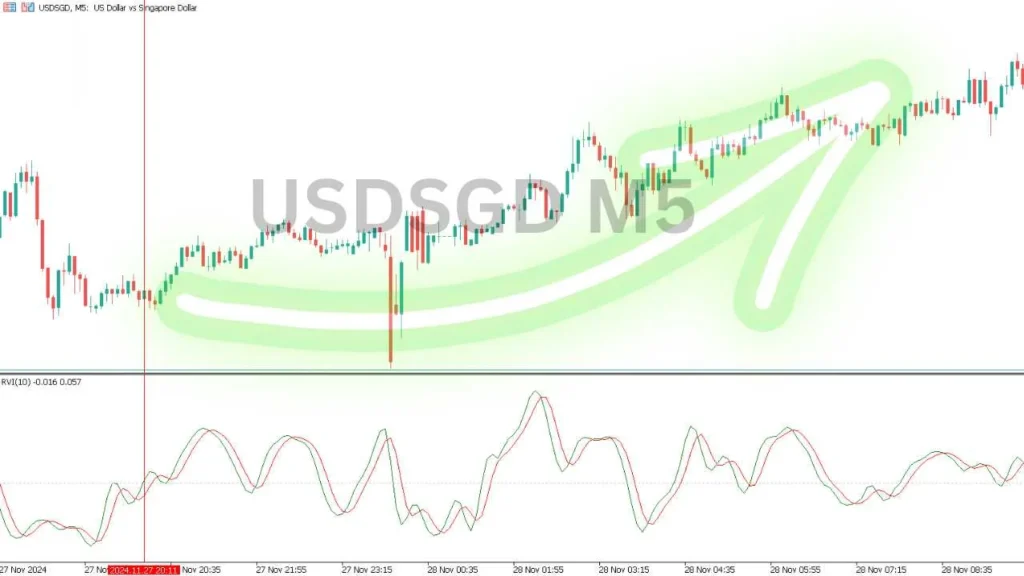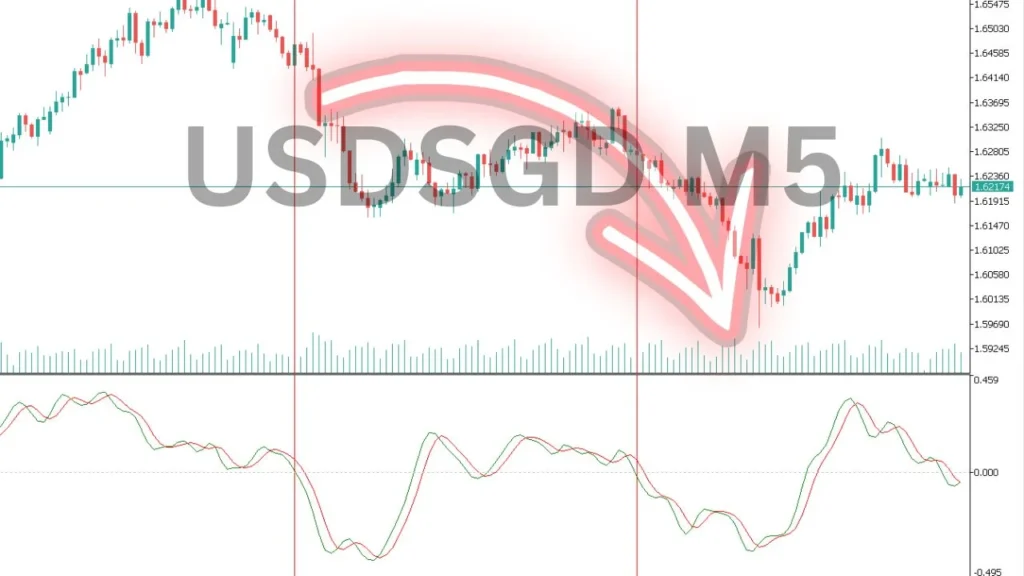If you’re looking to earn quick profits through fast trades, then scalping could be the perfect strategy for you. we’ll explain a simple 5-minute scalping strategy for trading the USDSGD currency pair using the Relative Vigor Index (RVI). The relative vigor index helps to measure how strong recent price movements are. This strategy helps you find clear signals to make quick, short trades. Let’s start with Assh.
Understanding Relative Vigor Index (RVI)
The Relative Vigor Index is a handy tool for traders to see how strong a trend is by comparing the closing price to the overall price range during a trend period. In simple terms, the RVI is based on the principle that in an uptrend, the closing price is usually higher than the opening price, and vice versa in a downtrend. furthermore, The RVI uses a moving average to smooth the data, making it easier for traders to understand the strength and direction of the trend.
How to Calculate Relative Vigor for USDSGD Scalping
Let’s discuss how you can calculate the RVI step by step:
- First, you look at the difference between the closing price and the opening price for each period
- Then, you find the difference between the high price and the low price by subtracting the low price from the high price.
- After that, you calculate the ratio of the difference between the close and open prices to the total price range.
- Finally, you should use a moving average to smooth the data, making the RVI easier to understand.
The value moves up and down around the zero line, giving buy or sell signals when it goes above or below zero.
How to do USDSGD scalping with Relative Vigor Index
To trade with the RVI, follow these simple steps:
Set up your chart
- First, choose the USDSGD pair.
- Next, set the time frame to 5 minutes for quick, short trades.
- Then, add the Relative Vigor Index(RVI) indicator to your chart so you can start observing the trend.
Identify buy signals


- Now wait for the RVI to cross above the zero line.
- Make sure the RVI’s signal line (smoothed version) also shows the same upward movement.
- when that happens, go ahead and Buy the USDSGD pair.
- don’t forget to set your stop-loss just below the recent low to protect yourself.
- for Taking profit, you can either aim at the next resistance level or set a fixed pip target that suits your strategy.
Identify sell signals

- Wait for the RVI to cross below the zero line.
- Make sure the RVI’s signal line confirms the downward movement.
- When everything lines up, go ahead and Sell the USDSGD pair.
- Don’t forget to set your stop-loss above the recent high to protect yourself.
- For taking profit, target the next support level or use a fixed pip targe that works for your strategy.
Profit Tips for USDSGD Scalping
- Use multiple time frames to confirm signals and get a clearer picture of the overall trend.
- Combine the RVI with other tools, such as moving averages or the MACD, to make your trade decisions stronger and confirm your signals.
- also, keep an eye on current economic news and events that could affect the USDSGD pair so you remain prepared.
Risk Management for USDSGD scalping
good risk management is key when trading with the Relative Vigor Index. Here are some tips to help you manage your risk:
- first, you should always set stop-loss orders to save yourself from big losses.
- second, Use position sizing to control how much money you risk on each trade.
- Then keep an eye on your trading results and adjust your strategies as needed.
Short Review
Scalping the USDSGD with the Relative Vigor Index is a powerful strategy for traders who want to take advantage of short-term price moves. By combining the RVI with other technical tools and using smart risk management, you can boost your trading performance and maximize your chances of making a profit.
More Strategies Crafted by TradingBotLab
- Scalping Strategies
- Trend Following Strategies
- Breakout Strategies
- Carry Trade Strategies
- Counter Trend
- News Trading
- Range Trading









